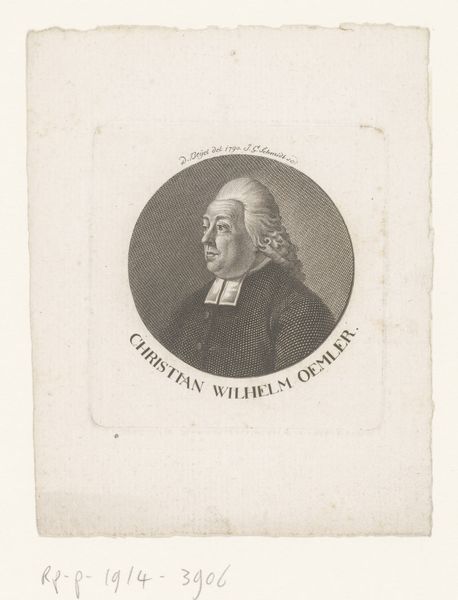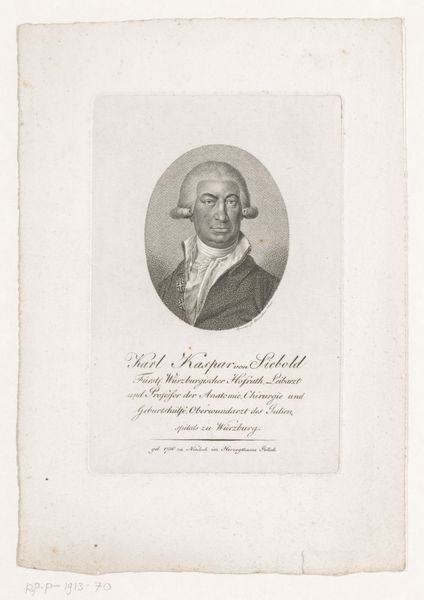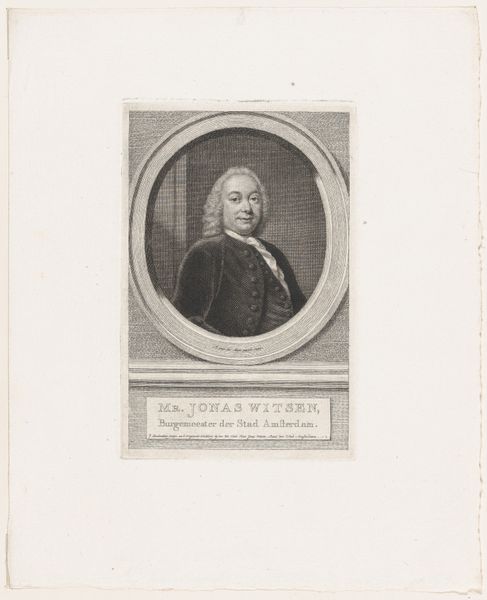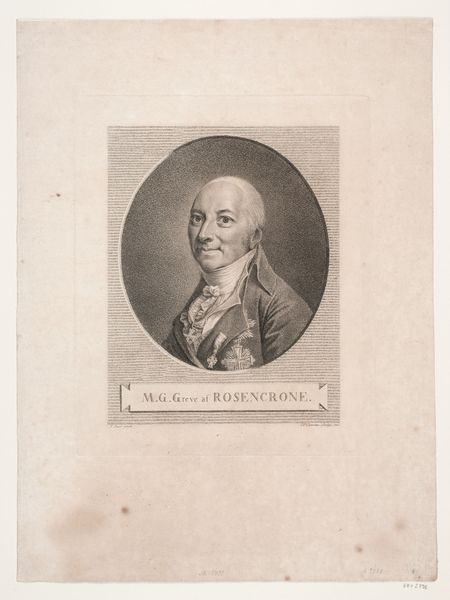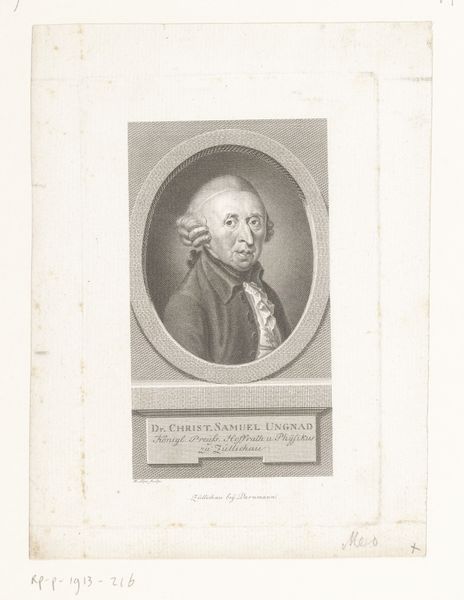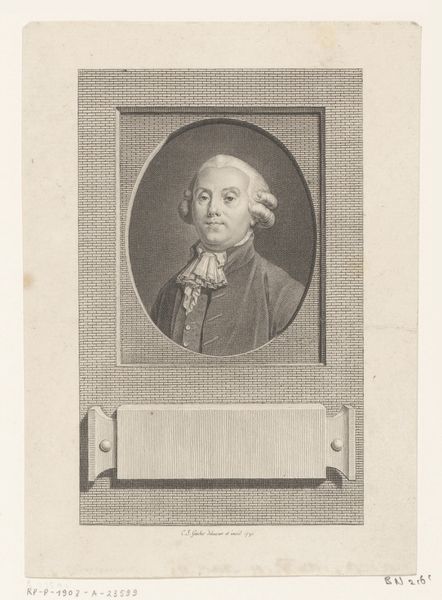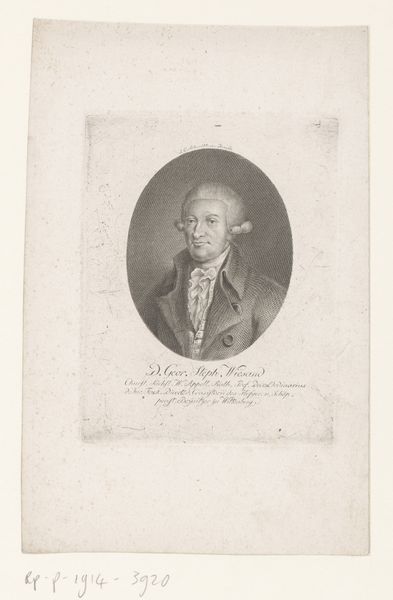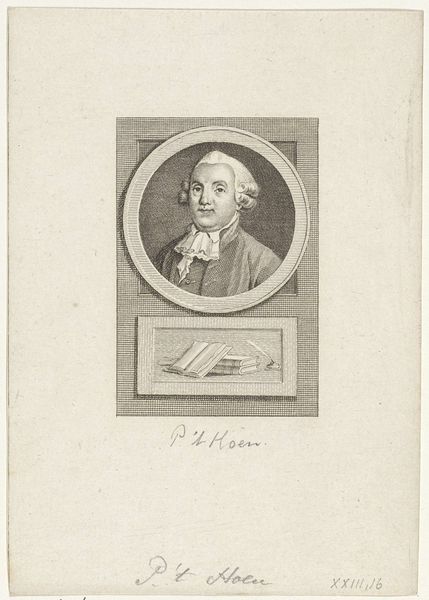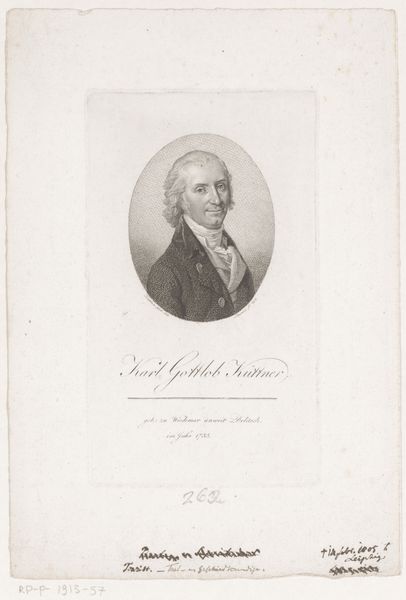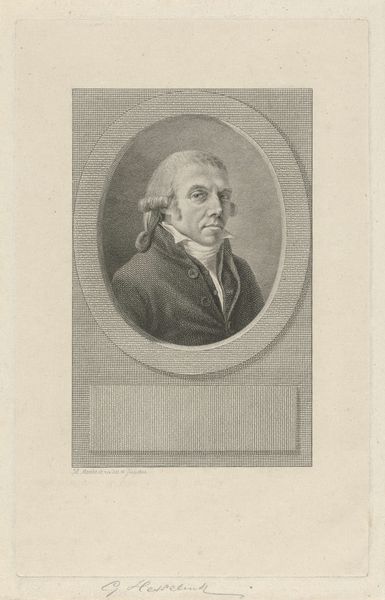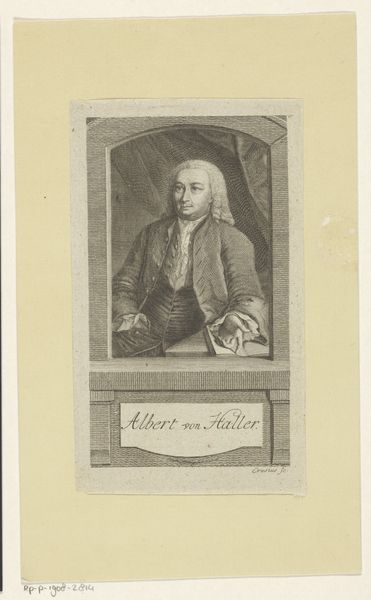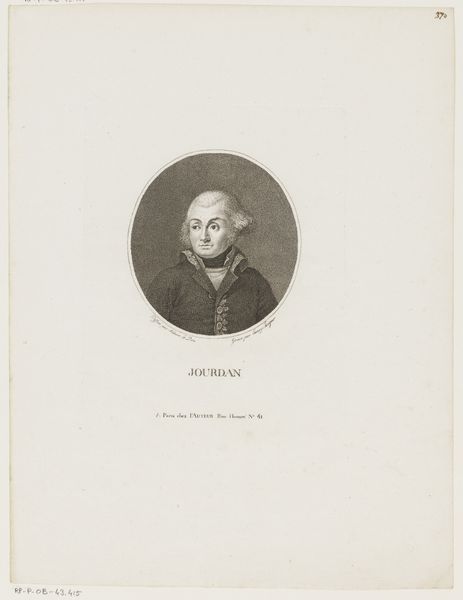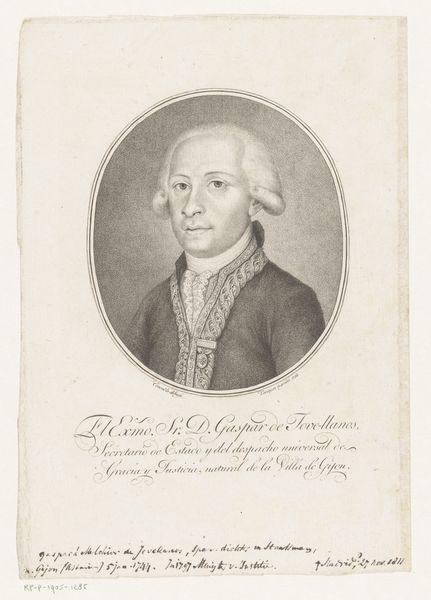
print, engraving
#
portrait
#
neoclassicism
# print
#
15_18th-century
#
history-painting
#
engraving
Dimensions: height 240 mm, width 176 mm
Copyright: Rijks Museum: Open Domain
Curator: Here we have "Portret van George Hendrik de Wilde," created in 1787 by François Joseph Pfeiffer. It’s an engraving, now residing here at the Rijksmuseum. Editor: The first thing that strikes me is its… self-assuredness. The subject’s slight smirk and the way his body is turned towards us but his face looks over is shoulder implies, dare I say, nonchalance. For an official portrait, it’s remarkably relaxed. Curator: The style is undeniably Neoclassical. Notice the idealized features and restrained emotion characteristic of that period. Also, there’s the oval frame, a common motif for portraits during the late 18th century, adding to its formality and emphasizing its function. Editor: The man’s profession seems significant; he’s identified as a Lieutenant Colonel, part of the Amsterdam militia. I wonder about the context of the work itself, in terms of civic identity and emergent middle class visibility. Is this a depiction of someone asserting their place in a changing society? Curator: Indeed, printmaking played a critical role. Engravings like these circulated widely. It's all about line, isn’t it? Look at how those intricate etched lines form the shadows and details of his uniform. The controlled strokes suggest precision, discipline, and ultimately reinforce an image of power. Editor: Do you think the limited tonal range of the engraving affects the reading of the artwork? What narrative of masculinity is it conveying through absence of, say, opulent colour? It contrasts quite starkly with the portraits of royalty or the aristocracy, wouldn’t you say? Curator: Absolutely. Its success is perhaps in its elegant understatement. A rejection of Baroque excesses in favor of clean lines. We’re drawn to the face first and foremost, that air of determined calm. It epitomizes rationality, balance... very much of the Enlightenment. Editor: Considering this image’s production as a print rather than a unique painting informs the portrait’s social function within a certain economic structure. It definitely creates the aura of an important man ready to defend the new political order. Curator: A sharp insight, I concur. It allows us to really explore the portrait through different lenses, both formally and socially. Editor: Ultimately it is in considering the work within a broader context which reveals more about its deeper symbolism.
Comments
No comments
Be the first to comment and join the conversation on the ultimate creative platform.
